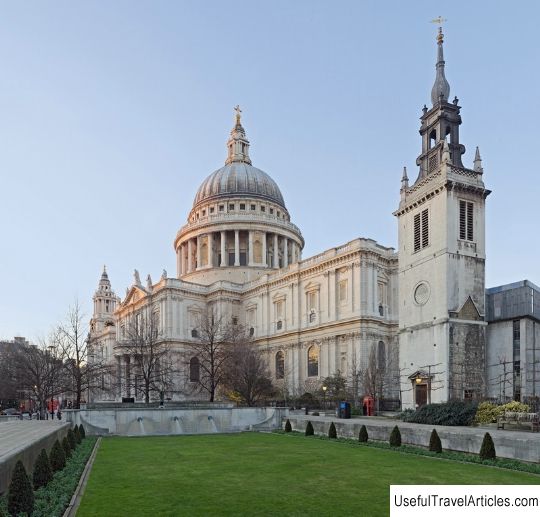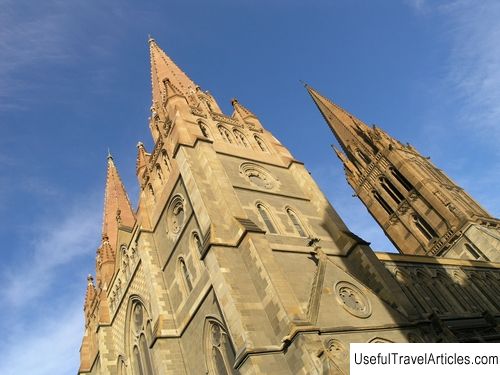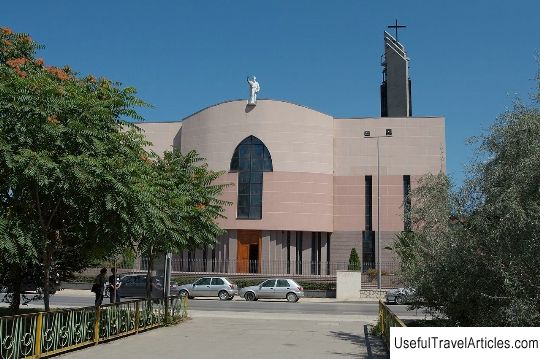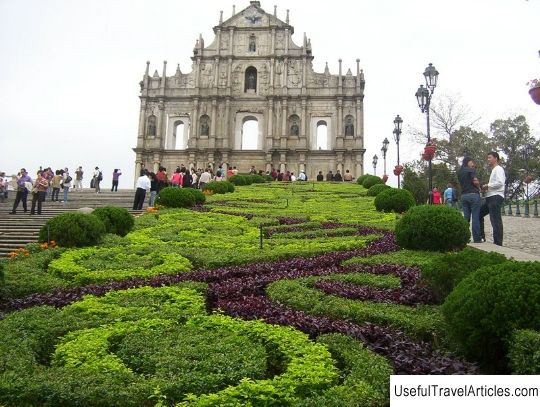St. Paul's Cathedral description and photos - Great Britain: London
Rating: 8,9/10 (859 votes) 
St. Paul's Cathedral description and photos - UK: London. Detailed information about the attraction. Description, photographs and a map showing the nearest significant objects. The name in English is St. Paul's Cathedral. Photo and descriptionSt. Paul's Cathedral is an Anglican cathedral named after the Apostle Paul, built at the highest point in London - on top of Ludgate Hill. There are suggestions that Christian churches have existed on this site since the time of the Anglo-Saxon conquest. Most likely, they were made of wood, and no material traces of these buildings have survived, just as there are no traces of the stone church that burned down in a fire in 1087. After the fire, the so-called "old St. Paul" was built, construction lasted more than two hundred years, and most of the unfinished temple was again destroyed by fire in 1136. Consecrated in 1300, the temple was one of the largest in Europe, and its spire was 178 meters high (according to the archaeological excavations of Francis Penrose in 1878) ... During the church reforms of Henry VIII, the cathedral, like many other temples in Britain, fell into decay and is gradually being destroyed. In 1561, lightning struck the spire, and it burned down, in which both Protestants and Catholics saw the wrath of God against the unrighteous deeds of opponents. In 1670, the site was cleared of the ruins of an old building, and construction began on a completely new cathedral designed by the architect Sir Christopher Wren. Sir Christopher Wren has already built over 50 churches in London, and the proposal to rebuild the cathedral came to him even before the Great Fire of London in 1666. Several designs of the cathedral were made, which were significantly different from each other. From the first project, only one sketch and part of the layout came down to us. According to this project, the cathedral was a dome, similar to the Pantheon in Rome and a rectangular basilica. This option was rejected as not grand enough. The second project - in the form of a Greek cross - seemed too radical to critics. The third version has come down to us in the form of a Large model made of oak and plaster, six meters long and four in height. The Big Model is now on display in the cathedral. This option is based on the second project, but with an elongated nave. This option was also criticized by the clergy - preference was given to plans in the form of a Latin cross. In addition, such a cathedral had to be built right away - since it was crowned with a dome, and traditional cathedrals could be sanctified unfinished and served in them. Ren himself liked this option most of all, and he decided not to put his projects up for public discussion anymore. calling it a "waste of time" and an assessment of "incompetent judges." The fourth project was an attempt to combine the Gothic traditions of the English churches with the harmony of the Renaissance style. The final version is still very different from what was approved. The king gave the architect the go-ahead to make "decorative changes" to the project, and Sir Christopher Wren took this permission quite freely. First of all, a dome appeared - it was not in the approved project, but it was he who became the key detail in the overall appearance of the cathedral. Inside the dome is the Whispering Gallery - due to the acoustics under the dome, a word spoken in a low whisper can be heard on the opposite side of the gallery. There is a belfry on the north-western tower - 13 bells of different building, including the largest bell in the British Isles, Big Paul. According to the tradition established by Pope John XIV, bells were baptized and given the name of some saint. Many famous people are buried in the cathedral - Lord Nelson, Winston Churchill, Alexander Fleming, Joshua Reynolds and Joseph Turner, but above all the creator of the cathedral, Sir Christopher Wren. There is no monument on his grave, only a Latin inscription: "If you are reading this, if you are looking for a monument, look around."        We also recommend reading Conversano description and photos - Italy: Apulia Topic: St. Paul's Cathedral description and photos - Great Britain: London. |




